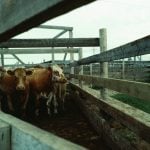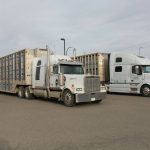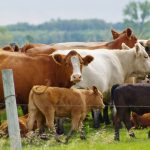Three Canadian transport trials showed that providing a rest stop during long-distance transport provided no clear or consistent benefits for the health or welfare of feeder calves.


A recent research trial has confirmed earlier studies showing rest stops offer no health or welfare benefits to beef calves

Canadian researchers have studied the effectiveness of BVD vaccination in cow herds

Research on the Record with Reynold Bergen

Research On the Record with Reynold Bergen

Research On the Record with Reynold Bergen

Research On the Record with Reynold Bergen

Research on the Record with Reynold Bergen

Research on the Record with Reynold Bergen

Research on the Record with Reynold Bergen

Research on the Record with Reynold Bergen